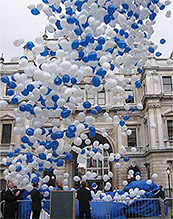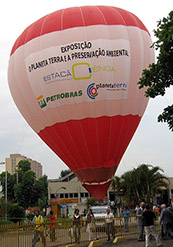The International Year of Planet Earth starts off with a bang!
The triennium of the International Year of Planet Earth (2007-2009) was launched in three continents (Asia, Europe and South America) within less than a month of New Year’s Day 2007.Turning first to Europe, two very different events marked the launch of the International Year of Planet Earth triennium (IYPE) in London early in January, one rather heavy and the other very much lighter than air.
Geoscientists from all corners of the Earth converged on London on 9 January for the inaugural meeting of the Board of the International Year of Planet Earth Corporation (familiarly known these days as the IYPE). Board Members numbering 15 came together with some 12 IYPE national Committee representatives, 3 International and Associate Partners, 2 observers and one of the IYPE’s Goodwill Ambassadors, Professor Aubrey Manning.
The heavy work over, the delegates ‘shape-shifted’ into celebratory mode on 10 January at the prospect of the formal joint launch of the International Year of Planet Earth and the Bicentenary of the Geological Society of London (2007), recognized by all as a very happy coincidence. Board members, GSL Fellows and schoolchildren all trooped out into the rain-threatened courtyard of Burlington House to hear Professor Richard Fortey FRS, President of the GSL, and invited speaker, Professor Aubrey Manning. We were told that nearly all the energy, raw materials and water on which we depend for our existence come from the Earth, so that they must be used in increasingly wiser and more sustainable ways if we are to succeed in making the global society healthier and wealthier. Only by continuing to ask and to deal with the answers to hard questions will we be able to advise courses and policies that are sustainable. Professor Manning congratulated the world’s oldest geological society on reaching its bicentenary and welcomed the International Year of Planet Earth prior to the launching of 4567 balloons, half of which bore the GSL logo and the other half that of the IYPE, each balloon representing 1 million years of Earth history! He spoke passionately on the need to nurture the Earth and for geology and its cognate sciences to play an increasingly vital role in ensuring that both the riches and the vulnerabilities of the planet are respected so that our dependence on the Earth may be tempered by long-term awareness of the principles of sustainability.
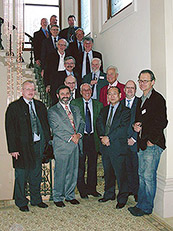
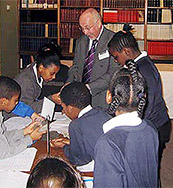
The global nature of the International Year of Planet Earth was suitably expressed by celebratory launches on two other continents. Soon after the London launch came South America’s turn in the form of a spectacular contribution by Brazil on 25 January in Sao Paulo. Here, the balloon theme stayed with the IYPE but, in this case, it was a single balloon that compensated for its lack of numbers by its impressive size. The event was organised in fine style by Brazil’s National Committee for the IYPE, chaired by Diogenes de Almeida Campos and Carlos Oití Berbert, the chosen day (25th January) deliberately coinciding with the public holiday dedicated to the city’s anniversary. The National Committee presented an impressive science and outreach programme for 2007-2009, including 8 National Congresses and Symposia ranging from Natural Disasters to Meteorology, and from Marine Sciences to Geochemistry and Ecology. Five other events and projects were placed under the IYPE umbrella, including Geological and Geo-diversity maps of South America. Two major exhibitions, three training courses and 7 other outreach activities, including Geological Road Maps, GeoParks, the Centenary of the CPRM, the Geological Survey of Brazil, TV Programmes and school activities will form the core of Brazil’s outreach events. Wilson Teixeira led a short tour through the large exhibition in the Estação Ciência dedicated to the International Year of Planet Earth.
Present at this spectacular launch was the Executive Director of the IYPE, Dr. Eduardo de Mulder, who spoke about the organisation of the IYPE and of the relation between the International Corporation and the now 36 National Committees. He went on to outlining examples of outreach and science activities in other countries, expressions and, of course, other balloon launches.
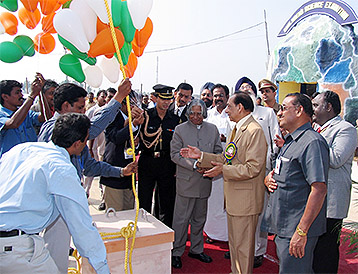
Although mentioned last here, India was the first nation to celebrate in spectacular fashion the launch of the IYPE triennium and, again, it was a balloon affair. This year’s annual Indian Science Congress, dedicated to Planet Earth, took place in the small town of Chidambaram, situated 200 km south of Chennai. The Indian Prime Minister (Dr. Manmohan Singh) opened the Congress, which was attended by 5000 scientists from all over India. The President of India, Dr. A.P.J. Abdul Kalam, was also present and delivered an impressive speech linking the Science Congress with the International Year of Planet Earth, after which he, too, released balloons in the delighted presence of a large group of schoolchildren.
It may well be that other nations around the globe will, through their National Committees, be inspired by these three examples to celebrate the International Year of Planet Earth in their own distinctive way. We wish them well, and hasten to assure them that balloons are not mandatory!
Edward Derbyshire
